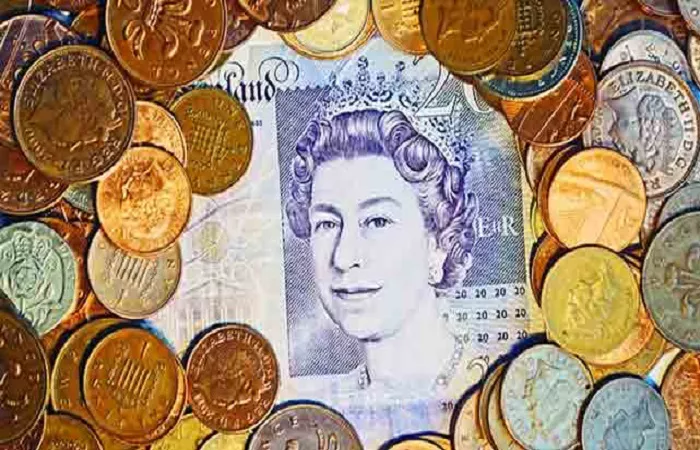In the vast and intricate world of foreign exchange, the exchange rate between the British pound (GBP) and the Indian rupee (INR) holds significant importance. This rate not only affects international trade between the United Kingdom and India but also impacts investment flows, tourism, and the overall economic well – being of both countries. The GBP/INR exchange rate is in a constant state of flux, influenced by a multitude of economic, political, and social factors. As such, understanding this exchange rate is crucial for businesses, investors, and individuals involved in cross – border transactions between the UK and India.
Historical Trends of the GBP/INR Exchange Rate
Over the long term, the GBP/INR exchange rate has experienced significant fluctuations. Looking back at historical data from platforms like cn.investing.com, we can observe periods of both appreciation and depreciation of the pound against the rupee.
For instance, in the past, the exchange rate has ranged from 102.530 to 112.498. These fluctuations are closely tied to major economic and political events. During the global financial crisis, both the UK and Indian economies were affected, leading to substantial changes in the GBP/INR exchange rate. In addition, policy changes by the central banks of both countries, such as adjustments in interest rates and monetary policies, have had a significant impact on the long – term trend of this exchange rate.
Factors Influencing the GBP/INR Exchange Rate
Macroeconomic Indicators
Interest Rates: Central banks play a crucial role in determining interest rates. When the Bank of England raises interest rates, it makes holding pounds more attractive. As a result, investors are likely to move their funds to the UK, increasing the demand for pounds and causing the pound to appreciate against the rupee. Conversely, if the Reserve Bank of India raises interest rates, it may lead to an increase in the demand for rupees, causing the rupee to appreciate against the pound.
Inflation Rates: A higher inflation rate in the UK relative to India means that the purchasing power of the pound is decreasing at a faster rate. This can lead to a depreciation of the pound against the rupee as the value of the pound in terms of goods and services is eroded. On the other hand, if India experiences higher inflation, the rupee may depreciate against the pound.
Economic Growth: Strong economic growth in the UK can attract foreign investment, increasing the demand for pounds. For example, if the UK’s GDP is growing at a healthy rate, businesses may expand, leading to more investment from abroad. This increased demand for pounds can cause the pound to appreciate against the rupee. Similarly, robust economic growth in India can lead to an appreciation of the rupee.
Political Stability
Domestic Politics in the UK: Political instability in the UK, such as changes in government policies, leadership changes, or issues related to Brexit, can have a significant impact on the pound. Uncertainty surrounding Brexit, for example, led to increased volatility in the GBP/INR exchange rate as investors were unsure about the future economic relationship between the UK and the European Union, as well as the UK’s trade relations with other countries, including India.
Domestic Politics in India: In India, political stability is also crucial. Policy changes related to trade, investment, and economic reforms can affect the country’s economic prospects and, in turn, the value of the rupee. For example, if the Indian government introduces policies that promote foreign investment, it can lead to an increase in the demand for rupees and an appreciation of the rupee against the pound.
Global Economic and Geopolitical Events
Trade Wars: Global trade wars can disrupt the normal flow of trade between the UK and India. If trade barriers are increased, it can reduce the volume of exports and imports between the two countries, affecting the demand for both the pound and the rupee. For example, if the US – China trade war spills over and affects the UK and Indian economies, it can lead to increased volatility in the GBP/INR exchange rate.
Geopolitical Tensions: Geopolitical tensions in different parts of the world can also impact the GBP/INR exchange rate. For instance, tensions in the Middle East can affect oil prices, which can have a knock – on effect on both the UK and Indian economies. Since both countries are major consumers of oil, changes in oil prices can influence inflation rates, economic growth, and ultimately, the exchange rate between the pound and the rupee.
Conclusion
The exchange rate between the British pound and the Indian rupee is a complex and dynamic variable that is influenced by a wide range of economic, political, and social factors. As of April 1, 2025, the rate shows a specific set of values, but it is constantly changing. Historical trends have demonstrated significant fluctuations, and these are likely to continue in the future. Macroeconomic indicators, political stability, and global events all play a crucial role in determining the GBP/INR exchange rate. The significance of this exchange rate extends to various aspects of the economies of both countries, including trade and investment.
Related topics:
- Current USD Exchange Rate: $3,000 USD in Australian Dollars
- Current USD Exchange Rate: $58 USD in Australian Dollars
- Current AUD Exchange Rate: $6000 Australian Dollars in US Dollars


